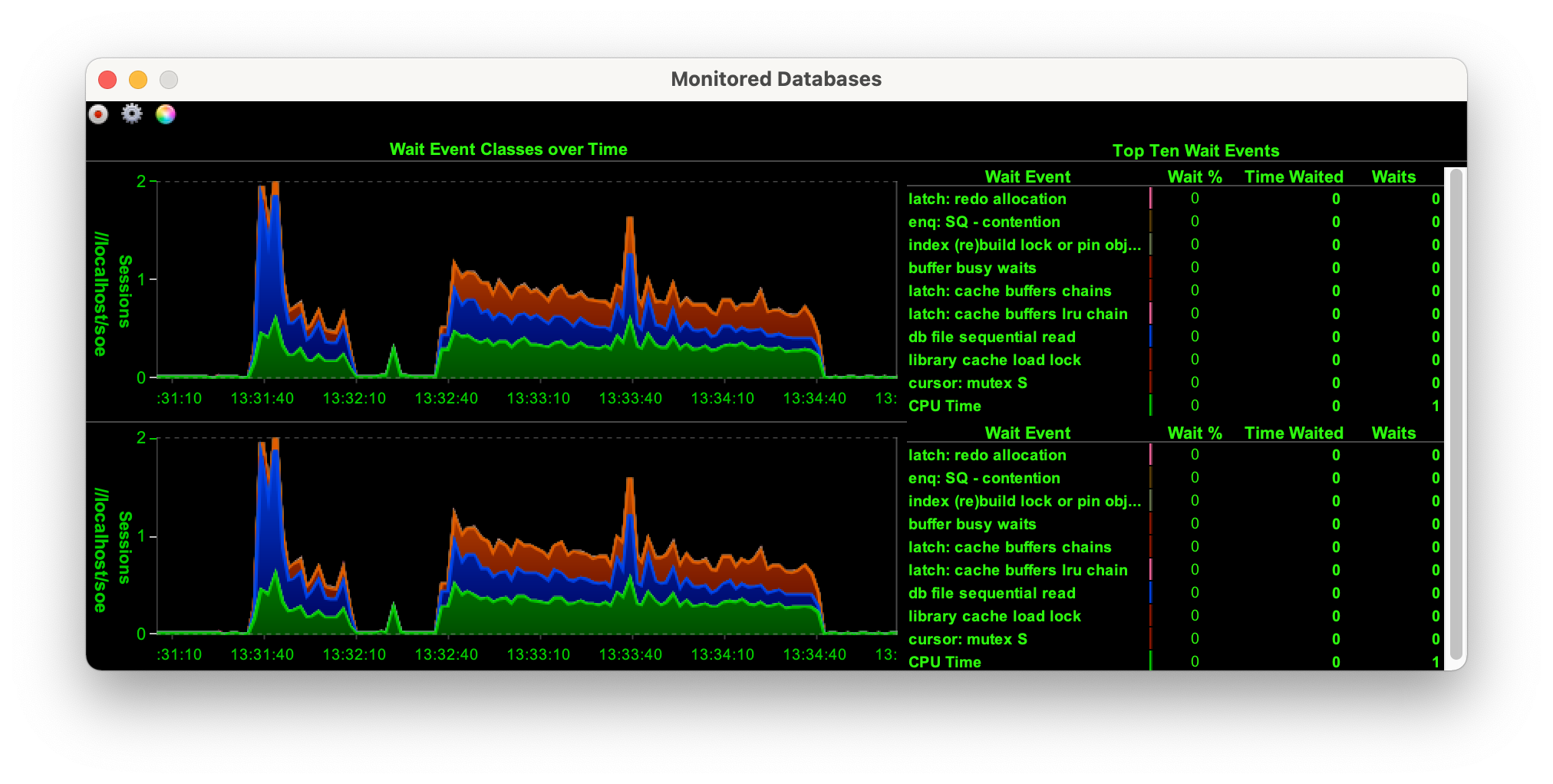Database Time Monitor
Database Time Monitor is a simple standalone tool that enables you to see how “Database Time” is being used by your Oracle Database. It’s designed to be as simple as possible without any dependencies. It will run against Oracle Enterprise and Standard Edition. The tool works against all supported versions of the Oracle Database.

It should be regarded as a simple utility for quick analysis of how a database is running and not as a replacement for enterprise ready tools such as “Oracle Manager”. Users can look at one or more databases simultaneously. This is particularly useful for Oracle Real Application Clusters.
It also allows the user to record wait the wait event classes for later analysis to a comma delimited file.
Installation and configuration
You’ll need a JVM (OpenJDK or Oracle) of version 17 and above. The tool can be downloaded from here. After downloading the file, unzip the file and change into the bin directory. You can edit the database.xml file to reflect your environment or use the command line options to specify another configuration file.
The xml file (defaults to database.xml) only features a few simple attributes. Multiple databases are supported as shown in the config file below.
<?xml version = '1.0' encoding = 'UTF-8'?>
<WaitMonitor Title="Monitored Databases" xmlns="http://www.dominicgiles.com/waitmonitor">
<MonitoredDatabase>
<ConnectString>//linuxserver1/soe</ConnectString>
<Comment>Order Entry System</Comment>
<Username>system</Username>
<Password>enc(JTTtUng7fseg1iSTljVs3A==)</Password>
</MonitoredDatabase><MonitoredDatabase>
<ConnectString>//linuxserver2/sh</ConnectString>
<Comment>Sales History System</Comment>
<Username>system</Username>
<Password>enc(JTTtUng7fseg1iSTljVs3A==)</Password>
</MonitoredDatabase>
</WaitMonitor>
You can also specify usernames and connection strings (thin only) from the command line.
$ ./dbtimemonitor -h
usage: parameters:
-c <filename> specify config file
-cf the location of a credentials file for Oracle Cloud
(ADW/ATP/ExaCS)
-cs connect string of database you wish to monitor. i.e.
//<servername>/<servicename>
-d display name for monitored database
-debug turn on debug information
-h,--help print this message
-p password of user
-u username for connections (requires access to V$ tables
i.e. system)
The tool allows you specify the refresh rate and which database processes are monitored via its preferences.